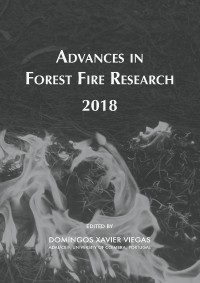Please use this identifier to cite or link to this item:
https://hdl.handle.net/10316.2/44708| Title: | The determinants of crown fire runs during extreme wildfires in broadleaf forests in Australia | Authors: | Filkov, Alexander I. Collins, Luke4, Rawlins, Anthony Duff, Thomas J. Cirulis, Brett Penman, Trent D. |
Keywords: | crown fires;risk;prediction;modelling;wildfire | Issue Date: | 2018 | Publisher: | Imprensa da Universidade de Coimbra | Journal: | http://hdl.handle.net/10316.2/44517 | Abstract: | Crown fires in forest ecosystems can pose a major threat to life and property due to their high intensities and rapid rates of spread. However, research into the prediction of crown fire dynamics in the Eucalyptus forests of Australia is limited. Previous studies have focused on coarse temporal scales, utilised low resolution weather based predictors, and disregard the spatial nature of crown fires. Our study aimed to use observations from large wildfires in eucalypt forests to develop an empirical model to predict the likelihood of crown fire events using environmental predictors at an hourly scale. Our study was conducted in south-eastern Australia using data from fifteen large wildfires that occurred between 2009 and 2015. Fire severity maps were created for each fire at a 30 m resolution using Landsat imagery from which we calculated the proportion of 30 m pixels experiencing crown fire within a 150 x 150 m window (2.25 ha). Predictor variables were chosen to represent the four key environmental drivers of fire behaviour, namely fuel moisture (i.e. live and dead fuel), fuel load and structure (i.e. surface, elevated and bark fuels, tree height), fire weather (i.e. vapour-pressure deficit, wind speed, relative wind direction) and topography (i.e. slope and ruggedness). Random Forests were used to model the effect of environmental drivers on the proportion of crown fire. Fuel moisture content variables were the best predictors of probability of crown consumption. Topographic variables and fire weather had only an intermediate influence and fuel load and structure had the lowest influence. Crown fire runs largely occurred when thresholds in vapour-pressure deficit (<4 kPa) and dead fuel moisture content (<7%) were exceeded. Predictions from the model showed a high degree of agreement with the raw fire severity maps. The proposed models have the potential to provide guidance on the likelihood of crown fire during fire events. | URI: | https://hdl.handle.net/10316.2/44708 | ISBN: | 978-989-26-16-506 (PDF) | DOI: | 10.14195/978-989-26-16-506_190 | Rights: | open access |
| Appears in Collections: | Advances in forest fire research 2018 |
Files in This Item:
| File | Description | Size | Format | |
|---|---|---|---|---|
| the_determinants_of_crown_fire_runs.pdf | 834.53 kB | Adobe PDF |  |
Items in DSpace are protected by copyright, with all rights reserved, unless otherwise indicated.
